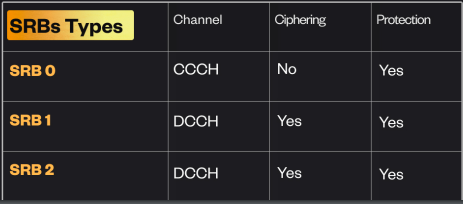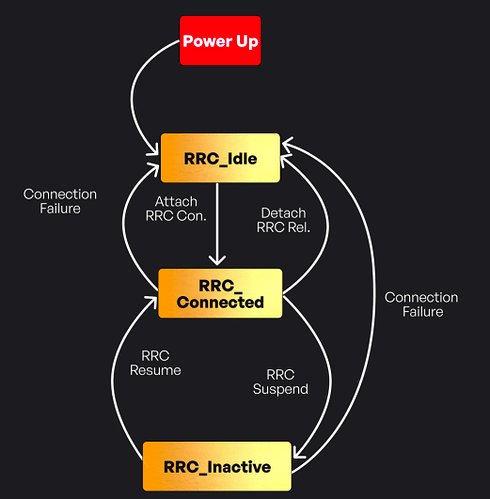5G networks rely more on signaling than data.
Without it, no data can flow.
SRBs regulate UE-to-network messaging.
No SRBs?
![]() No attach.
No attach.
![]() No mobility.
No mobility.
![]() No security.
No security.
SRBs control RRC and NAS exchanges.
They enforce authentication.
Here’s what they do:
![]() SRB0 initiates RRC communication.
SRB0 initiates RRC communication.
No security.
Just a handshake.
It carries the RRC Connection Request.
![]() SRB1 is the backbone.
SRB1 is the backbone.
It secures RRC signaling.
It ensures handovers, and encryption.
![]() SRB2 segregates NAS traffic.
SRB2 segregates NAS traffic.
It carries authentication and post-security activation.
![]() SRB3 is rare.
SRB3 is rare.
It prioritizes time-sensitive signaling.
It supports dual connectivity and critical commands.
RRC relies on SRBs.
Without them, no bearer establishment.
![]() No resource allocation.
No resource allocation.
![]() No network access.
No network access.
Many focus on DRBs.
But SRBs dictate session success.
No SRB efficiency?
High latency.
Security risks.
Failed handovers.
Without SRBs, there would be no connectivity, and no mobility.
However, just having SRBs isn’t enough.
Networks must optimize their usage.
Thanks for reading.
PDF: ![]() 5G SRB Types (by Furqan Jameel).pdf (4.4 MB)
5G SRB Types (by Furqan Jameel).pdf (4.4 MB)
LinkedIn: ![]()

